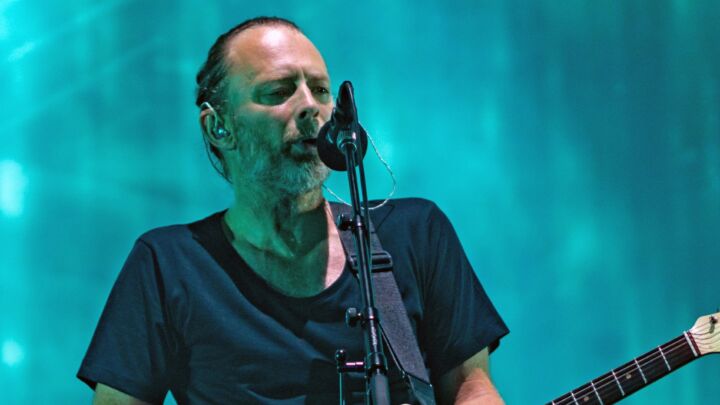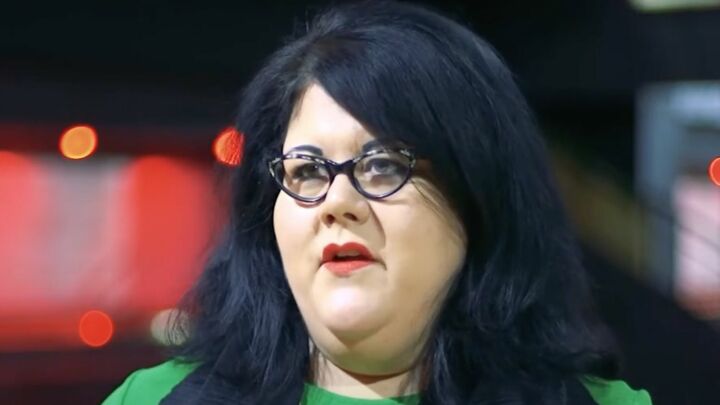Why I applauded the ‘BNP ballerina’
Who cares what Simone Clarke thinks in private? Her performance as Giselle was sprightly, springy and brilliant.

Want to read spiked ad-free? Become a spiked supporter.
‘Poor girl. She must be shaking like a leaf. It’s absolutely nerve-wracking’. Jane, a 70-year-old balletomane, is waiting in the London Coliseum’s lobby before Friday’s English National Ballet (ENB) matinee performance of Giselle. She is talking about 36-year-old Simone Clarke, the ENB principal dancer due to play the eponymous heroine in this afternoon’s show. But Jane isn’t just referring to the normal nervous exhilaration that any prima donna must feel before a performance; there is also the fact that a loud group of protesters has gathered outside to chant their disapproval of Simone Clarke’s membership and support of the far-right British National Party (BNP).
Clarke was ‘outed’ as a member of the BNP just before Christmas, after Guardian journalist Ian Cobain went undercover as the BNP’s central London organiser. Since then, she has danced in one other performance, The Nutcracker, which took place on the day she was exposed. There were reports of Clarke being confronted backstage by her ENB colleagues, the ENB being a company of international stature made up of dancers from around the world. However, the ENB has described Clarke’s views as a personal matter: ‘Any personal view expressed by one of our employees should not be considered as endorsed by the company.’
In the lobby, we await Clarke’s second performance since the revelation of her political leanings was first made. The dancer has defended her views. In an interview with the Mail on Sunday in December she said: ‘I’ve never been clearer in my head that I’m moving in the right direction and at the right time.’ Clarke says she obviously isn’t a racist, since she is in a personal relationship with fellow ENB principal Yat-Sen Chang, who is of Chinese-Cuban parentage; rather she is concerned about immigration. ‘I have been labelled a racist and a fascist because I have a view on immigration – and I mean mass immigration – but isn’t that something that a lot of people worry about?’, she has asked.
For me – a fan of ballet who finds the BNP contemptible – the scandal of the ‘BNP ballerina’ throws up two interesting questions. Firstly, does it matter what an artist thinks in private so long as it doesn’t affect her performances in public? And secondly, why, in all the flurry of protest about Clarke’s political views, is nobody actually making a defence of mass immigration? In other words, shouldn’t we leave Ms Clarke to get on with the business of being a professional dancer, and kickstart a proper public debate about immigration today? The storm in a tutu over this principal dancer’s private views is the worst of both worlds: it has denigrated our view of art, while doing nothing to clarify the immigration issue or challenge immigration controls.
The failure to take up Clarke’s and other BNPers’ views on mass immigration was clear in the protests outside the Coliseum on Friday afternoon. Activists from Unite Against Fascism (UAF) chanted ‘Ballet not bigotry’ and ‘Ballet should be Nazi-free, Nazi-free, Nazi-free, Ballet should be Nazi-free, Stop the fascists’ – to the tune of ‘London Bridge is Falling Down’. Seriously. Yet instead of tackling arguments against immigration and putting the case for scrapping immigration controls, UAF’s leaflet stoked up Holocaust imagery in order to bash the ballerina and her fellow supporters of the BNP.
The leaflet said: ‘The BNP is a fascist party which denies the Nazi Holocaust – in which 15million Jews, trade unionists, gypsies, Slavs, black, lesbian, gay and disabled people were murdered…. When fascists come to power they destroy the freedom of artistic expression. René Blum, the choreographer and founder of the Ballet de l’Opéra in Monte Carlo, was one of the many people murdered in Auschwitz in 1943 under Nazi occupation. It is in those people’s memory that we should oppose all forms of fascism’.
This on a leaflet being handed out to ballet-watchers in St Martin’s Lane on a Friday afternoon in tolerant twenty-first-century London. From the tone, you could be forgiven for thinking that Britain 2007 is like Germany 1936, sliding down a slippery slope to fascist rule and Holocaust. Here, UAF protesters massively exaggerate the importance and impact of the BNP, which remains a small and isolated party. They also denigrate the memory of the Holocaust, a uniquely horrific event, by insinuating that the existence of one BNP supporter in the ENB is evidence of great and terrible horrors to come, possibly even another Holocaust. This isn’t about having a political debate; rather the Holocaust is turned into a moral absolute and wielded to make people feel guilty.
And it worked on some members of the audience. Emma, 31, had not heard about Clarke’s BNP membership before seeing the protesters, and said she now felt ‘upset’. Lindsey, 27, was ‘a bit concerned’, but she said she would still attend because ‘I’m here to see the ballet at the end of the day’. Only one person, Judy Chan, 62, from Harlow, decided against attending the performance after she encountered the protesters and learned of Clarke’s views. However, the majority of ballet-goers attended the matinee as planned. I was with them, amongst the bemused pensioners and bewildered schoolchildren asking their teachers ‘Why are those people shouting?’
Audience members generally gave two reasons for why they attended the performance despite learning of the principal dancer’s views: a) democracy and b) the ballet. Jane, the 70 year-old balletomane, was attending with Nadine, her daughter-in-law from Switzerland. Nadine, 43, said: ‘I’m from a democratic country and this is about Simone Clarke’s own opinion. She’s a ballerina; she could be a socialist, a communist or a liberal. Art and politics should be kept separate.’ Indeed, imagine all the great art that would never have seen the light of day if the likes of UAF had their way, and shows or exhibitions were shut down on the basis of views held by the artists involved. Imagine if we went along with the suggestion made by Lee Jasper of the National Assembly Against Racism and sacked Clarke because of her views, and presumably denied a platform to all other artists with dodgy leanings. Many classic pieces of literature, art and music would be suppressed if personal political beliefs became the measure of their worth.
Dipak, 33, said: ‘It is a free country and we’re just here to see the ballet. Anyway, she’s the only one in the BNP. The others aren’t.’ He makes an important point that has been lost in much of the commentary on the BNP ballerina. Friday’s performance was not about Simone Clarke; no ballet is ever about just one person, however dazzling a dancer they might be. Initially, the anti-Clarke protests spilled over into the performance. About 10 minutes into the first act, UAF supporters in the audience began chanting ‘The BNP is a racist, fascist organisation’, ‘Kick racism out of the arts’ and ‘It’s a disgrace this has gone ahead’. The audience shushed the protesters, who were quickly asked to leave. The rest of us wanted to savour the performance, and at times we enthusiastically applauded Ms Clarke.
So why did I clap for the BNP ballerina, whose views on immigration I consider to be bigoted and wrong? Because like everyone else (except, perhaps, for the BNP leaders said to be in the audience) I was applauding the art, not the politics; I was applauding Clarke’s dancing on a public stage, not what she thinks and says in private. The role of Giselle suits Clarke’s sprightly, springy style very well. Also, behind every principal dancer lies a strong tradition of disciplined training and inspired choreography that seek to achieve the transcendent through a physical display; an artistic climate that is fostered, not by one dancer, but by an entire company.
One of the pleasures of seeing Giselle on Friday was witnessing the corps de ballet of vengeful Wilis, a malevolent white force moving as one. Makhar Vasiev, director of ballet at the Maryinsky Theatre, describes the importance of the corps de ballet in the upcoming BBC series celebrating Tchaikovsky’s ballets: ‘The women’s corps de ballet is the biggest star in this theatre. It has to be a single ensemble. In this theatre tradition is the most important thing because it is a living process…. All the dancers have different abilities and talents but we have to unify them.’ Seeing this in action was wonderful, and worthy of applause. The real narrow-mindedness is in believing that this entire performance, this most collective piece of art, should not have gone ahead because of one dancer’s private views. That is a recipe for censoriousness and over-cautiousness in the art world.
I hope the ENB continues to keep its nerve and refuses to sack Clarke. We should be able to enjoy dance, and other forms of art, free from any political interference – and free from the suggestion that public arts should reflect the ideas and beliefs of the state or the status quo. Trying to force arts practitioners faithfully to reflect only acceptable and mainstream thinking really would sound the death knell for freedom and experimentation in the arts.
Shirley Dent is communications director at the Institute of Ideas and writes about dance for spiked and Culture Wars. She will be organising debates and discussions on dance in relation to the Battle of Ideas 2007. Shirley can be contacted by email at [email protected]
Celebrate 25 years of spiked!
A media ecosystem dominated by a handful of billionaire owners, bad actors spreading disinformation online and the rich and powerful trying to stop us publishing stories. But we have you on our side. help to fund our journalism and those who choose All-access digital enjoy exclusive extras:
- Unlimited articles in our app and ad-free reading on all devices
- Exclusive newsletter and far fewer asks for support
- Full access to the Guardian Feast app
If you can, please support us on a monthly basis and make a big impact in support of open, independent journalism. Thank you.






Comments
Want to join the conversation?
Only spiked supporters and patrons, who donate regularly to us, can comment on our articles.